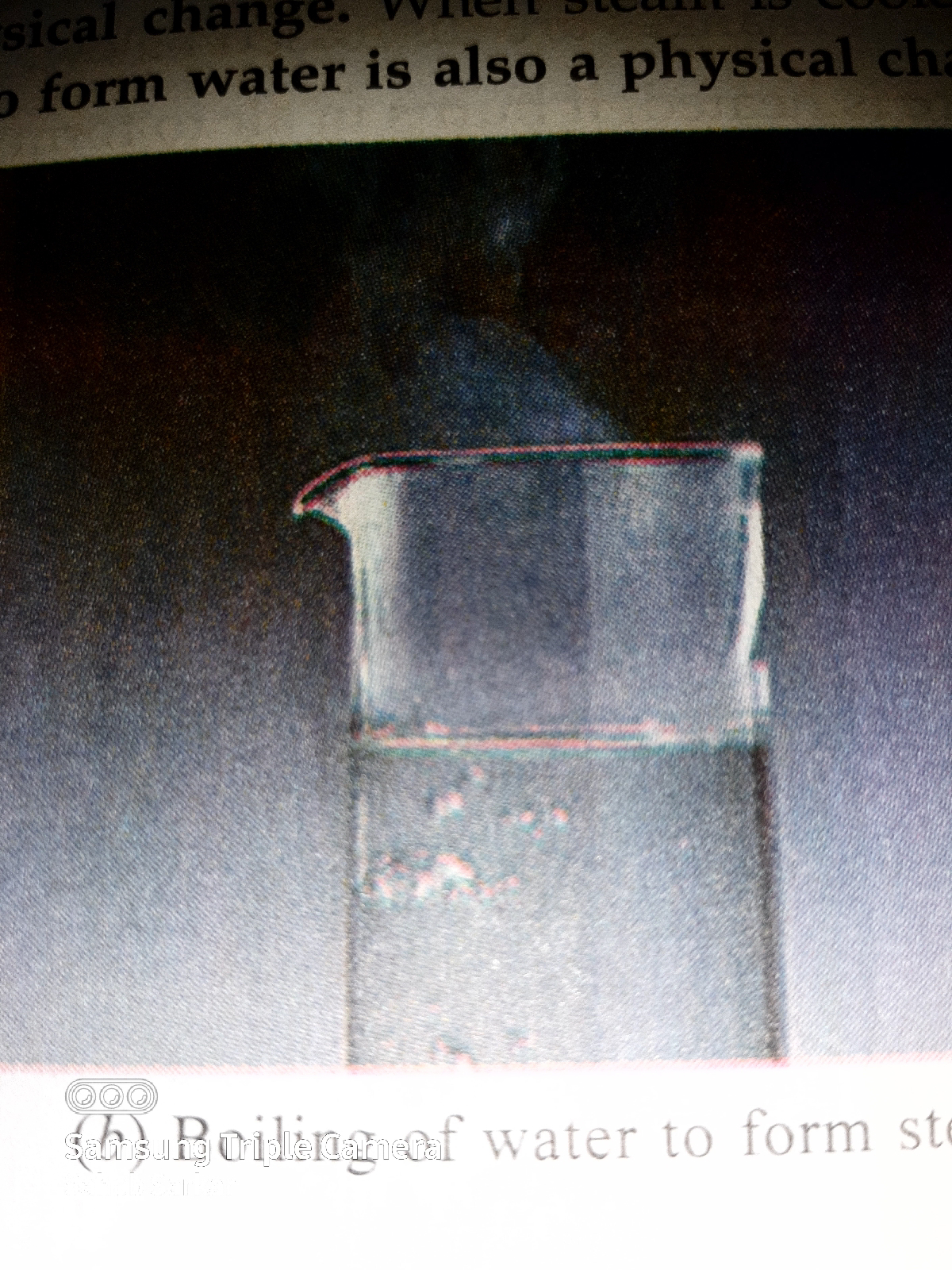What is physical change and chemical change ?
Physical Change
The chemical changes are permanent changes which are usually irreversible. For example, the burning of paper is a permanent change which cannot be reversed. This is because we cannot combined the products of burning of paper to form the original paper once again.
Those changes in which no new substances are formed, are called physical change. In a physical change the substances involved do not change their identity. They can be easily return to their original form by some physical process. This means that physical change can be easily reversed. The change in physical state, size and shape of a substance are physical changes. Some common examples of physical changes are : melting of ice, freezing of water, boiling of water, condensation of steam, making a solution, glowing of an electric bulb and breaking of a glass tumbler.
The physical changes are temporary changes which can be reversed easily to form the original substance. For example the melting of ice to form water is a temporary change we can reverse this physical change easily by cooling water to form the original substance, ice.
Some more examples of physical changes are Melting of ice; Melting of butter; Melting of Glass; Dissolving common salt in water; Cutting or tearing a piece of paper; Tearing of cloth; and Rotation of a fan; etc.Chemical Change
Those changes in which new substances are formed, are called chemical changes. In a chemical change, the substances involved change their identity. They get converted into entirely new substances. The new substances usually cannot be returned to their original form. This means that chemical changes are usually irreversible. Some common examples of chemical changes are : Burning of magnesium wire; Burning of paper; Rusting of iron; Ripening of fruits; Formation of curd from milk; and Cooking of food.
The chemical changes are permanent changes which are usually irreversible. For example, the burning of paper is a permanent change which cannot be reversed. This is because we cannot combined the products of burning of paper to form the original paper once again.
Some more examples of chemical changes are: Burning of candle wax; Burning of charcoal; Burning of incense stick; Formation of iron sulphide from iron and sulphur; Growth of a plant; Cutting of trees and Digestion of food. During all this changes new chemical substances are formed. So, these all changes are regarded as a chemical changes. Baking of roti on Agassi stove is a chemical change.







Comments
Post a Comment